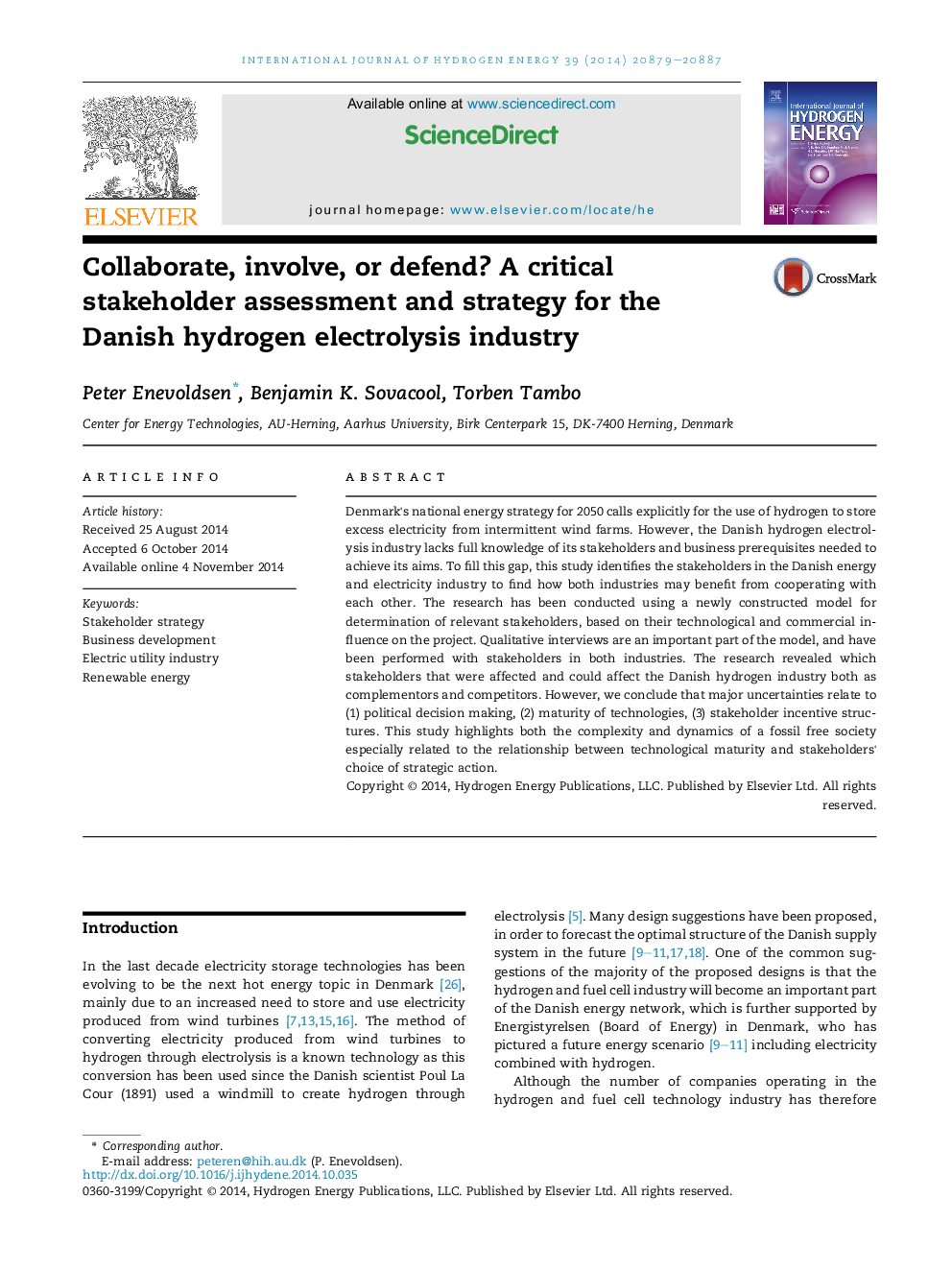| Article ID | Journal | Published Year | Pages | File Type |
|---|---|---|---|---|
| 7716601 | International Journal of Hydrogen Energy | 2014 | 9 Pages |
Abstract
Denmark's national energy strategy for 2050 calls explicitly for the use of hydrogen to store excess electricity from intermittent wind farms. However, the Danish hydrogen electrolysis industry lacks full knowledge of its stakeholders and business prerequisites needed to achieve its aims. To fill this gap, this study identifies the stakeholders in the Danish energy and electricity industry to find how both industries may benefit from cooperating with each other. The research has been conducted using a newly constructed model for determination of relevant stakeholders, based on their technological and commercial influence on the project. Qualitative interviews are an important part of the model, and have been performed with stakeholders in both industries. The research revealed which stakeholders that were affected and could affect the Danish hydrogen industry both as complementors and competitors. However, we conclude that major uncertainties relate to (1) political decision making, (2) maturity of technologies, (3) stakeholder incentive structures. This study highlights both the complexity and dynamics of a fossil free society especially related to the relationship between technological maturity and stakeholders' choice of strategic action.
Related Topics
Physical Sciences and Engineering
Chemistry
Electrochemistry
Authors
Peter Enevoldsen, Benjamin K. Sovacool, Torben Tambo,
